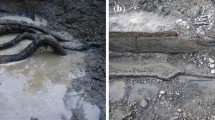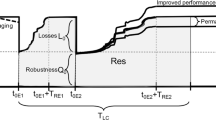Abstract
Infrastructure refers to an aggregation of numerous facilities that constitute the backbone of urban operations. The lifeline systems are usually interdependent; thus, any damage to one system can cause a chain reaction, triggering failures in related and connected systems, leading to a cascade of disasters. Taiwan is located in the Circum-Pacific seismic zone, where earthquakes occur frequently. Moderate-to-large earthquakes can adversely affect the lifeline systems, severely impairing most urban functions. Therefore, understanding the effects of earthquakes of this intensity on lifeline systems as well as how these effects contribute to disaster scenarios in urban areas is a critical requirement for the Taiwanese government. From the disaster management perspective, this study constructed a seismic impact chain module for lifeline systems on the basis of an analysis of the direct and indirect impacts of seismic activity. Furthermore, the factor of infrastructure impact was examined using the matrix method. Simulations of 6.6 magnitude earthquakes along the Shanchiao fault were used to assess the impact chain of the lifeline system and the effectiveness of a hospital disaster rescue service. In the simulation, the lifeline systems in the epicentral area were directly damaged, whereas critical infrastructure was indirectly affected. Therefore, the study results will assist the authorities in making intelligent decisions regarding lifeline infrastructure and resource management.
Similar content being viewed by others
References
Al-Zwainy FMS, Mezher RA (2013) Statistical evaluation of the affective factors on the process of preparing time schedules for Iraqi construction projects. Journal of Engineering and Sustainable Development 17(1):33–61
Al-Zwainy FMS, Mezher RA (2018) Diagnose the causes of cost deviation in highway construction projects by using root cause analysis techniques. Arabian Journal for Science and Engineering
CEOC (2013) Convened the work report for 0602 Earthquake in Nantou. Central Emergency Operation Center, Taipei, Taiwan (in Chinese)
CEOC (2016) Convened the work report for 0206 Earthquake. Central Emergency Operation Center, Taipei, Taiwan (in Chinese)
CEOC (2018) Convened the work report for 0206 Earthquake in Hualien. Central Emergency Operations Center, Taipei, Taiwan (in Chinese)
Dudenhoeffer DD, Permann MR, Manic M (2006) CIMS: A framework for infrastructure interdependency modeling and analysis. Proceedings of the 2006 winter simulation conference, December 3–6, Monterey, CA, USA, 478–485
Hassel H, Johansson J, Cedergren A, Svegrup L, Arvidsson B (2014) Method to study cascading effects. D2.1.CascEff Project, FP7 EU project 607665
Huang FK, Wang GS (2018) Study of soil liquefaction of 2018 Hualien Earthquake, No. 158. National Science and Technology Center for Disaster Reduction E-paper, Taipei, Taiwan (in Chinese)
Ke SS, Huang MW, Su WR, Yeh CC, Liu SY, Ke MC, Wu BR, Wu TH, Chen CY (2010) The summary report of 20100304 Jiasian Earthquake, No. 57. National Science and Technology Center for Disaster Reduction E-paper, Taipei, Taiwan (in Chinese)
Laugé A, Hernantes J, Sarriegi JM (2015) Critical infrastructure dependencies: A holistic, dynamic and quantitative approach. International Journal of Critical Infrastructure Protection 18:16–23, DOI: https://doi.org/10.1016/j.ijcip.2014.12.004
Nation Fire Agency (2010) Investigation report: 990304 Jiasian Earthquake. Nation Fire Agency, Taipei, Taiwan (in Chinese)
NCDR (2013) Preliminary information summary of 0602 Nantou Earthquake. National Science and Technology Center for Disaster Reduction. Taipei, Taiwan (in Chinese)
NCDR (2016) 0206 earthquake disaster investigates and losses summary in Meinong. National Science and Technology Center for Disaster Reduction, Taipei, Taiwan (in Chinese)
NCREE (2010) Reconnaissance report on Jiaxian earthquake in Kaohsiung on March 4, 2010. NCREE-10-010, National Center for Research on Earthquake Engineering, Taipei, Taiwan (in Chinese)
Rinaldi SM, Peerenboom JP, Kelly TK (2001) Identifying, understanding, and analyzing critical infrastructure interdependencies. IEEE Control Systems Magazine 21(6):11–25, DOI: https://doi.org/10.1109/37.969131
Author information
Authors and Affiliations
Corresponding author
Rights and permissions
About this article
Cite this article
Hsu, CH., Teng, MC. & Ke, SS. A Comprehensive Method for Seismic Impact Chain Assessment of Urban Lifeline Infrastructure: A Case Study of Taipei Area, Taiwan. KSCE J Civ Eng 25, 3650–3661 (2021). https://doi.org/10.1007/s12205-021-1938-0
Received:
Accepted:
Published:
Issue Date:
DOI: https://doi.org/10.1007/s12205-021-1938-0




